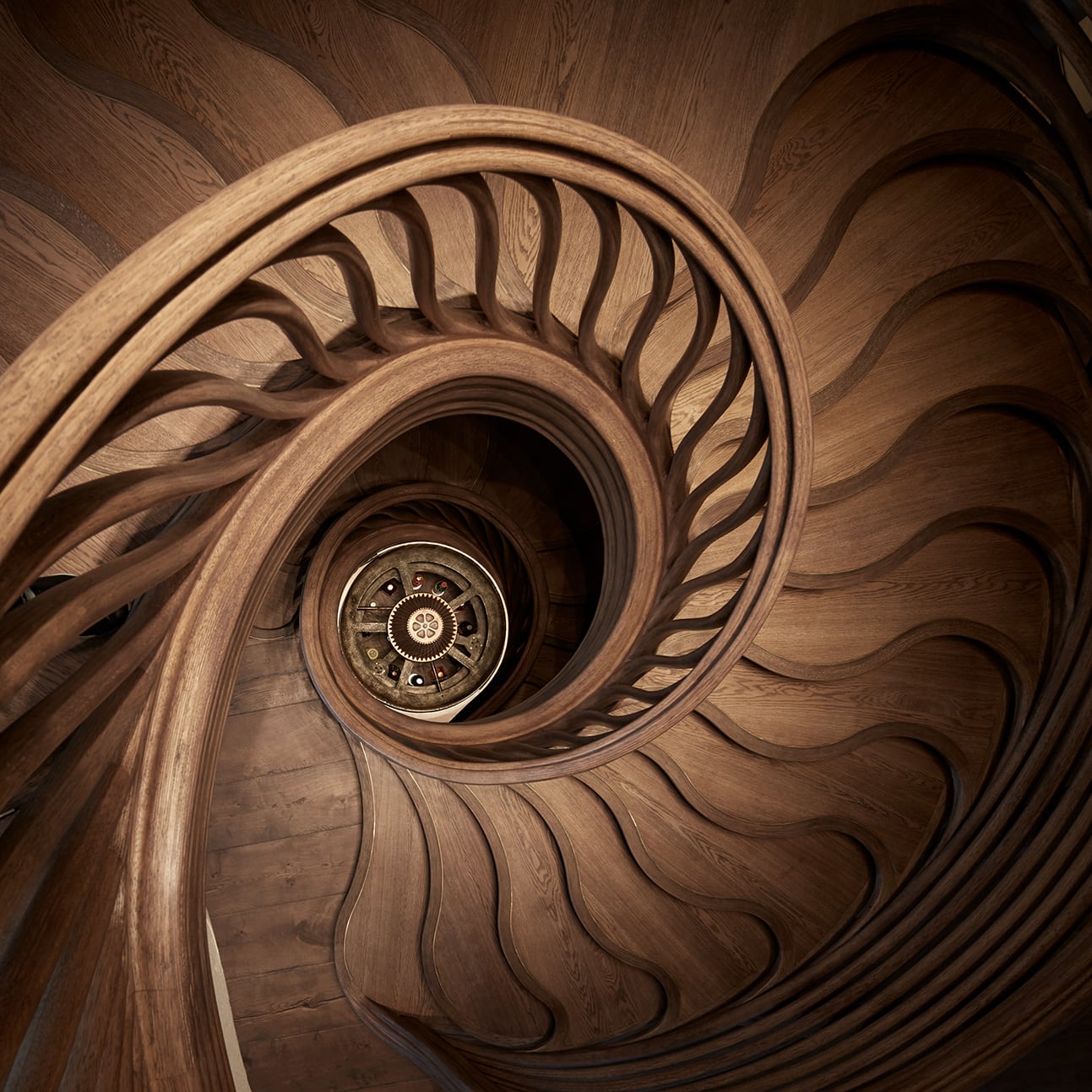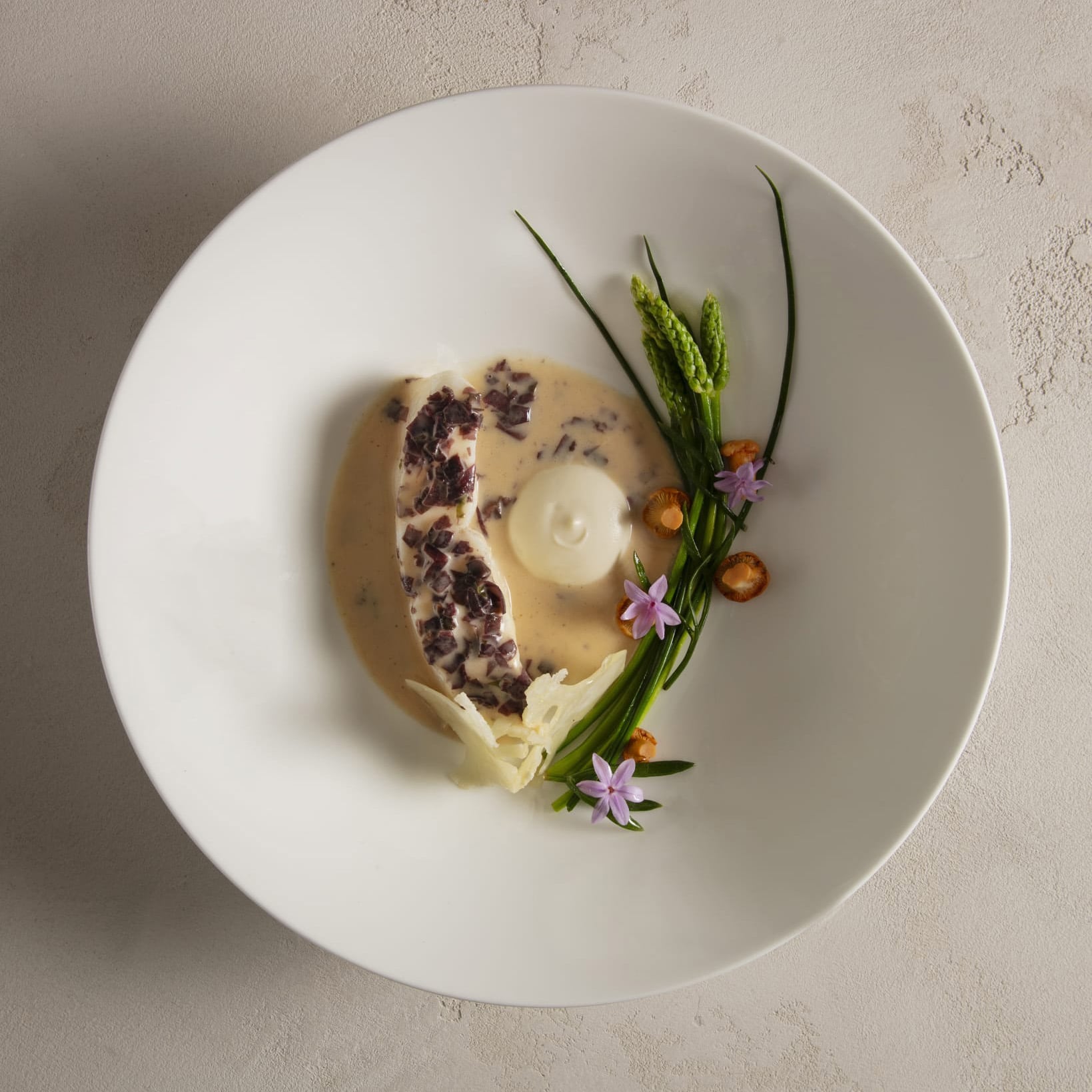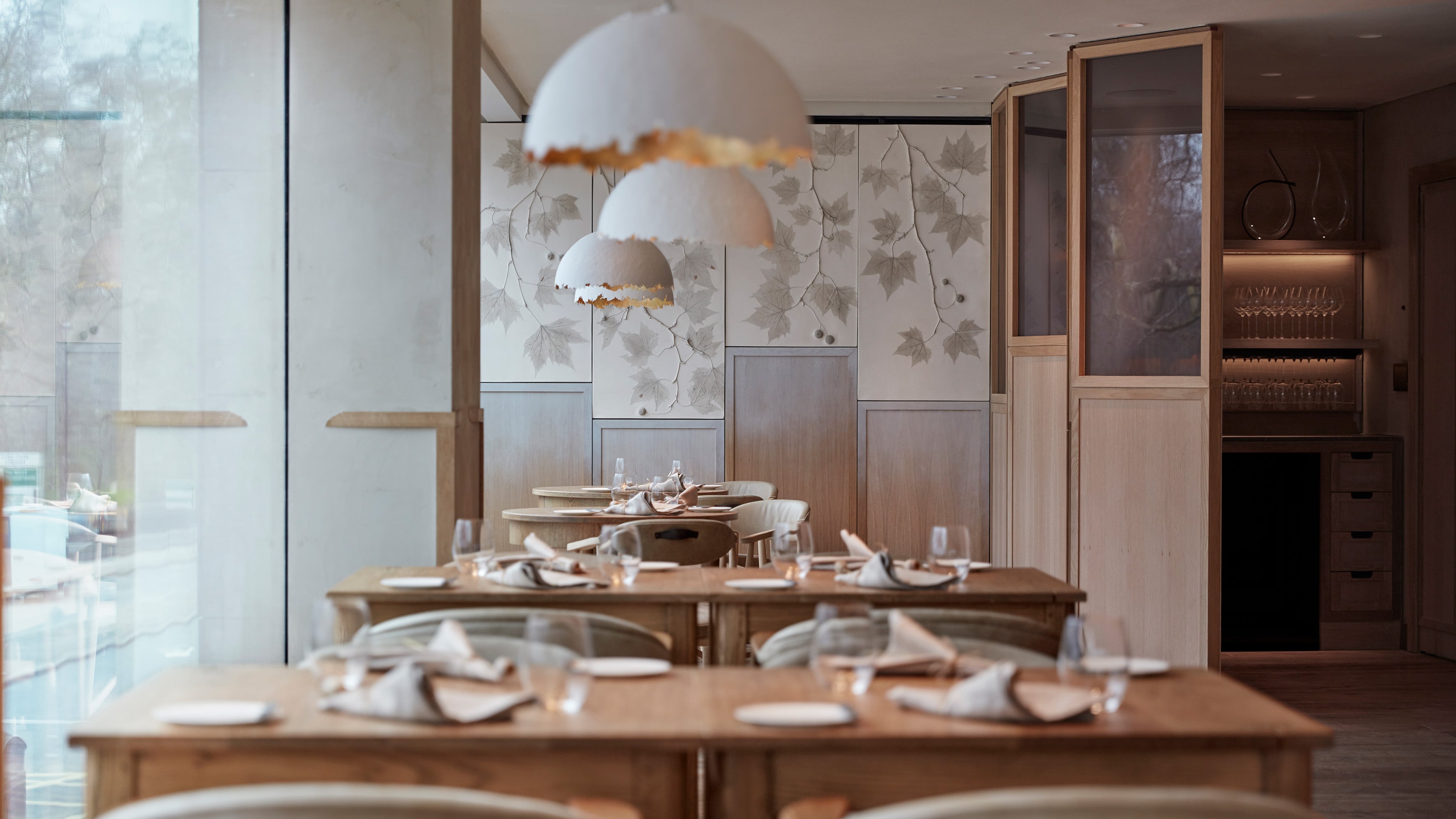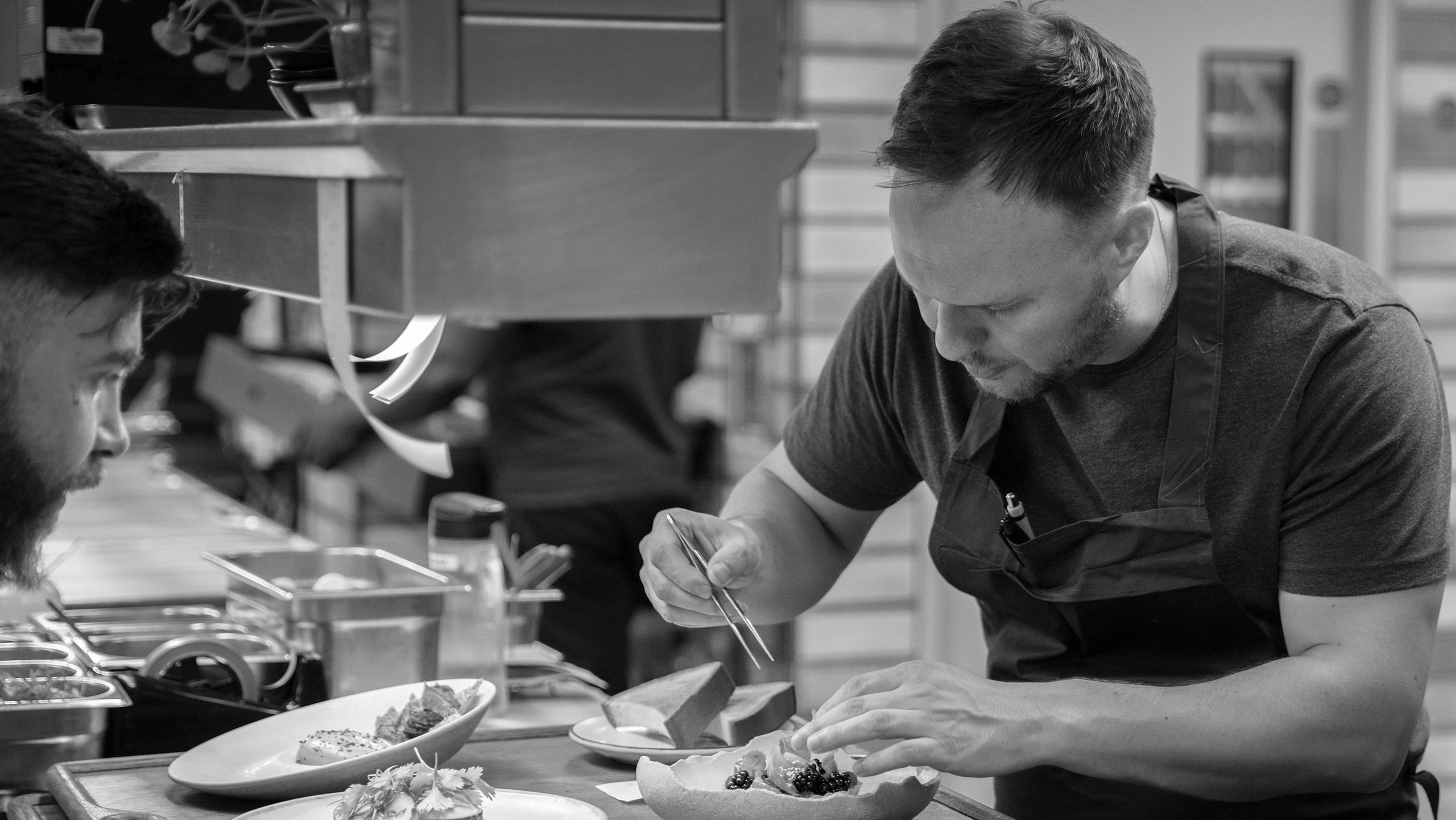Breakfast might be touted as the most important meal of the day, but it’s rarely a priority for Michelin-starred kitchens (if they even serve it at all). Not so at Mayfair restaurant Hide, where the morning shift accounts for a staggering 50% of its total covers. On a busy weekday the 170-cover site can serve up to 360 people between 7am and 11am, a figure that will strike fear into the heart of anyone that has been involved in delivering breakfast in a hospitality setting.
“We can turn the tables up to three times,” says Hide’s chef director Josh Angus with the steely look of a man who has plated up more than his fair share of eggs Benedict. “Setting up is like getting ready for war. It’s a tough service because people expect their dishes quickly and there are a lot of modifications and special requests. But it’s still a great way to start the day.”
Amazingly, Hide’s luxurious breakfast menu - staples include black truffle scrambled eggs on toast; French toast with blueberry compote and crème crue; and ripe honey mango with Thai basil and lime leaf - is executed by between four and five chefs depending on bookings.
Setting up is like getting ready for war
Hide is comfortably the busiest Michelin-starred restaurant in the UK (and quite possibly Europe, too) serving an average of 550 guests each day and up to 700 on busier days (see Hide in numbers, below). Starred restaurants - especially standalone ones that aren’t part of a hotel - rarely seat more than 50 guests due to the consistently high standards and meticulous attention to detail such ventures demand (exclusivity and the eye-watering costs associated with running a plus-sized top-end restaurant also come into it).
Founders Yevgeny Chichvarkin and Tatiana Fokina turned this model on its head when they launched their debut restaurant in 2018. At least partly inspired by the success of the more low-key The Wolseley, restaurants such as Novikov and Sexy Fish had already drawn up the blueprint for the blow-the-budget all-day Mayfair restaurant, but Hide was a different beast entirely, winning its star less than six months after it opened.
That wasn’t quite the plan, however. At launch, Hide was two restaurants in one with the more spendy Above (on the top floor of the hulking Piccadilly site) aiming for two stars and ground floor dining room Below going after one. Michelin, however, opted to ignore the distinction and awarded the entire venue a star.
“There was quite a bit of confusion, a lot of people thought the star was just for Above, but it was actually for both,” says Angus, who was the launch head chef for Below and now oversees the whole of Hide following the departure of its original chef patron Ollie Dabbous late last year.

Two become one
A year or so before Dabbous left Hide became a single restaurant. “It was a collective decision from all the senior managers. Below was very busy but Above could be quiet at times. Having two different teams sometimes caused friction too so it made a lot of sense,” explains Angus.
Consolidating has proved a boon for the business. Hide is now able to use the upstairs dining room for breakfast at peak times, and it’s also allowed Angus to streamline kitchen operations and significantly reduce his chef headcount - from about 80 chefs to a little over 50 - by dedicating the Above kitchen to breakfast and private dining.
“It was the right thing to do commercially, and it’s also made life easier for the team,” he says. “Having to run a busy breakfast service from the downstairs kitchen while the rest of the team were trying to set up for lunch used to bring out the worst in people. We can also get the food out a lot quicker.”
Hide in numbers
Total number of seats: 170
Number of floors: Three
Size: 13,000sq ft
Average number of covers per day: 500 (up to 700 on busy days)
Average covers per week: 4,000
Total number of staff employed: 144 (64 BOH including KPs and 80 FOH and support staff)
Average spend: £40 at breakfast, £110 at lunch and £195 at dinner
Total number of suppliers used: Around 40
Average number of deliveries each day: 12
Wine cellar: 8,000 listings across Hide and its sister wine shop Hedonism totalling close to 100,000 bottles
Maintaining standards
Hide is a seven-day-a-week operation that’s closed for just two days a year (Christmas Day and New Year’s Day). These two days aside, there is never a time when there aren’t staff in the restaurant due to Hide’s bakery - which also supplies its Mayfair based spin-offs The White Horse wine bar and café Hideaway - being a rolling 24-hour operation with its eight-strong team of bakers working either a 10pm to 8am night shift or a 6am to 6pm day shift.
“We don’t make it easy for ourselves,” grins the Yorkshire-born Angus, whose cooking CV includes Oxfordshire’s Le Manoir aux Quat’ Saisons and London’s Pied à Terre and Dabbous.
“There’s virtually nothing we don’t make in house. We do whole animal butchery; we have a charcuterie and fermentation programme. We even make the bread for our croque monsieur, which is a big commitment when you serve 60 of them a day.”
Angus says that Hide’s huge volumes don’t put much of a restriction on the suppliers the kitchen can use. The team is still open to work with the best and that includes small suppliers - it gets the sausages for its breakfast from a very small supplier in Hereford, for example. That said, Angus says the kitchen always has backups in place for when smaller suppliers can’t fully fulfil the orders. “But we want the best and are willing to pay for it.”

How Hide maintains its high standards is down to almost military precision. Training is key and spec sheets are written down to the very last detail. Ahead of each service, tasters of mise en place are put up from each section for senior chefs to try, which Angus says means chefs already know if things are good or bad and have time to do something about it. As is the case in most Michelin-starred places, the à la minute (cooked to order) components for each dish are closely inspected as they hit the pass for plating. “When you’ve been cooking for as long as I and my senior team have you can usually tell something isn’t right just by looking.”
Another secret to Hide’s success is the relative simplicity of its offer that stretches to only four core menus: breakfast, a la carte, set lunch and a tasting menu. At launch, Hide offered around a dozen menus including afternoon tea and a grazing menu, which Angus admits was a nightmare for ordering and mise en place and also meant the restaurant was in a perpetual service from the moment the doors opened until well into the night. “In the early days of Below I was in service for 17 hours. It just wasn’t sustainable. I was a right grumpy sod.”

Staying power
Another thing that sets Hide apart from most other large and frenetic central kitchens is low staff turnover in the upper ranks of the kitchen. The majority of Angus’ senior chefs have been at Hide since the early days of the business.
Having worked with Ollie for many years his style of food is very much my style of food. Hide is in my DNA
“Fundamentally, this is what makes delivering at this sort of volume possible. My head of departments have all been with me for at least five years and understand the standard that is required. I would be nothing without them,” says Angus, who puts the longevity of his senior team down to Chichvarkin and Fokina treating their staff well and the significant opportunity for skills building and career development that a kitchen like Hide affords.
Since the departure of Dabbous, Angus has sought to make his mark. “Every dish has been updated and there are new creations too. The challenge for me is that when Ollie was here, he was focused on the creative and I was focused on the delivery, but I now oversee both. My life is chaotic. It’s hard to find time for development but I love it. Having worked with Ollie for many years his style of food is very much my style of food. Hide is in my DNA.”


